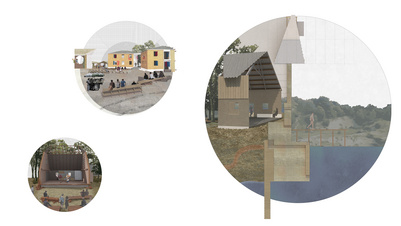Glacial Dust as a building material
Navn
Sofie Angelie Hovgaard
Uddannelsesgrad
Kandidat
Program
Political Architecture: Critical Sustainability
Institut
Bygningskunst og Kultur
År
2021
The experimentarium is a production facility in Nuuk that turns Glacial Dust, a local Greenlandic material, into building elements while engaging an up-scaling of Greenlandic kayak building techniques into new architectural tectonics. The project breaks with the construction industry's dependence on importing labour and materials from Denmark by proposing a new vernacular architecture

The production facility: The project focuses on the most important transformation of glacial dust: from dust to solid. The

Compressing and firing of the material in the Production Hall
Det Kongelige Akademi understøtter FN’s verdensmål
Siden 2017 har Det Kongelige Akademi arbejdet med FN’s verdensmål. Det afspejler sig i forskning, undervisning og afgangsprojekter. Dette projekt har forholdt sig til følgende FN-mål:
Decent work and economic growth (8)
Industry, innovation and infrastructure (9)
Responsible consumption and production (12)





































